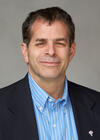In The News: College of Sciences
The Association for Women in Science (AWIS) is pleased to announce that another chapter has been established to serve the state of Nevada. Rosemary Brock, chapter president and founder of EISC Lab Data Automation, was motivated to create a local hub where women in STEM could connect with one another, access resources for personal and professional growth, and advocate for gender equity in science and technology.

The record-breaking rain soaking the Southwest U.S. in recent weeks still won't be enough to eliminate the megadrought status in the notoriously arid region completely, according to researchers.
Are you sick and tired of getting sick and tired? A UNLV-led research team is exploring whether the reason we sometimes feel ill in the first place is because our body's cells suffer from trash that accumulates within them.

Contrary to what many people think, there are only about 2,000 medicines approved by the Federal Drug Administration for people. And a quarter of those are biological products, or “biologics,” including vaccines, gene therapy, tissues and similar medicines—like insulin, for example.
The biggest issue you'd face is reaching that speed in the first place.
Silver Peak, which began mining lithium in the 1960s, won’t remain the only U.S. lithium mine for long.
For decades it has been an open question in the ubiquitin research field how proteins are labeled as being defective or unneeded. In a recent study Brenda Schulman, Director at the Max Planck Institute (MPI) of Biochemistry, and Gary Kleiger, Chair of Chemistry and Biochemistry Department at University of Las Vegas Nevada, together with their teams were able to visualize this precise mechanism, catalyzed by the Cullin-RING Ligase E3s, for the first time.

Chastened by a series of economic downturns that punished the hospitality industry, state leaders are working to broaden the economy.
Parrots don’t just hang out for fun. To move along narrow branches, a parrot can hang from a branch with its beak, swing its body sideways and grab hold farther along with its feet. The newly described gait, dubbed beakiation, expands the birds’ locomotive repertoire and underscores how versatile their beaks are, researchers report January 31 in Royal Society Open Science.

NASA published new research recently detailing a distant system of planets, and one of the authors is UNLV astrophysicist Jason Steffen. The work provides a deeper understanding of the solar system’s history using data from the retired Kepler space telescope.
An investigation from the Howard Center at Arizona State University uncovered the coming electric battery revolution in America will require billions upon billions of gallons of water to mine lithium. Many of the new U.S. mines will be located in the drought-prone American West.
Universe Today has explored the importance of studying impact craters and planetary surfaces and what these scientific disciplines can teach us about finding life beyond Earth.



